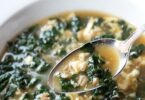Eating labne is basically a sport in the Middle East, but what is this magical cheese and how is it made? Our Chef Jacob explores:
When it comes to from the Middle East, it’s hard to really nail down which cheese would be considered the most authentic, longest-running staple cheese to come out of the region? Labne is definitely one of the earliest recorded cheeses in the region, but the debate over whether or not it even counts as cheese rages on (partially because every topic, even dairy, has the potential to become fuel for an argument in this part of the world). But to find out a little bit more about this so called ‘cheese’ we need to find out how and where it all started.
Labne is also very popular for those suffering from lactose intolerance because once the cheese’s liquids are removed, a significant portion of the milk’s natural lactose (milk sugar) content is removed, too. What variety of milk labne is made from basically doesn’t matter because there is only one technique to actually produce it. This technique is basically is a simple process of straining out the liquids from the milk product. By removing the liquids, you create a sour, semi-solid type of cheese, which has preserved the flavor of the milk product that was used. A helpful bi-product of this limited processing method is that there are usually little to no additives in the end product– which makes eating labne appealing to health lovers. It also helps labne stay refrigerator-stable for several weeks at a time. By drying the proteins out significantly, the cheese becomes preserved and won’t curdle because of the high fat content in the milk product. The drying technique was originally used by the Bedouins to make sure that it would be able to sustain long trips through the desert without proper refrigeration. Imagine traveling through arid Middle Eastern deserts with cheese on your camel’s back? You’d have to be pretty confident in that cheese to eat it after any extended period of time. The consistency of the labne, however, is up to the maker with some people choosing a softer, almost like a cream cheese consistency to be able to use as a dip, and some choosing to let it dry out longer like the Bedouins. The latter style is popular when turned into a block of cheese that is served with olive oil and za’atar. If you would like to try this process at home, here is a link to a recipe to create labne easily.
If you don’t have the time to make your own labne, it can easily be purchased in many ‘international style’ stores around the world as long as you know what to refer it to. For example, in rural North America, labne can often be called “plain Greek yogurt” but be careful, it doesn’t always mean that it is authentic labne, as in the UK it is called “Greek styled yogurt.” There are significant differences between real labne and Greek yogurts (both are delicious, but have different flavor profiles, textures, and culinary implications). Typically Greek yogurt will have a grainier texture than commercially produced smooth, velvety labne products, and this is one of the many ways to tell the difference if you live in a part of the world that doesn’t have steady access to authentic labne. If you live in a major city like New York, Los Angeles, or anywhere with a significant population, there will almost definitely be a Middle Eastern or international grocer stocking a variety of brands and styles ready for you to schmear on your favorite toasted bread, top malawach recipes with it, use as a dressing for a tomato and onion salad, or eat straight up.
Labne is super versatile and will not only will it add something new to you culinary arsenal, it’s healthy and great for use in many various dishes… plus, won’t you seem cultured when you serve it to your friends at your next Sunday brunch?










